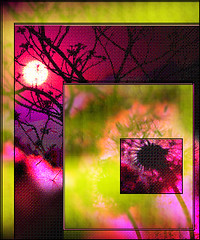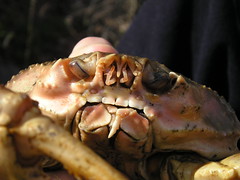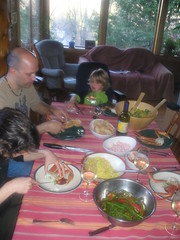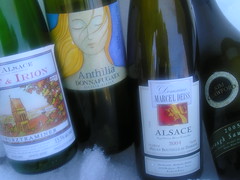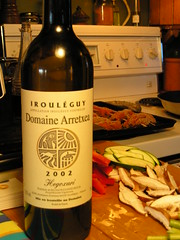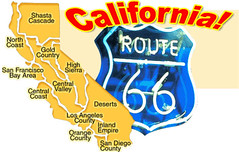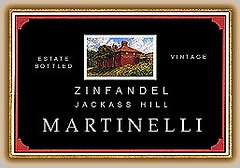 Tweaked! Wine, Additives and Other Over-Manipulated Things
Tweaked! Wine, Additives and Other Over-Manipulated Things
Didn't Pammy do a great job at the Junos?
Once again the nerdier contigent of blogland has wrapped its collective eggo around the question of manipulations and additives. The latest affront to the purists is the use of
wood chips, a subject which follows closely on the heels of similar debates over the use of colorants, enzymes, sugars, artificial tannins, etc... I can’t wait for the arm wrestle over
irradiated wine. The list is long and debating each intervention separately has proven to be a non-starter, it seems one either embraces what innovation offers or tends to denounce it. While I tend to the latter, I must agree with its proponents that there is a certain amount of ‘reactionarianism’ from the anti-additives school. So here is hopefully a more sober and less emotional treatment of the question than my
previous effort.Why use additives in the first place?
Whether due to vineyard failure or choice of wine style, the majority of these manipulations are used to compensate for inadequacies in our pre-fermented juice; chapitalization for the under-ripe, acidification and tannin adjustments for the conversely over-ripe. Aromatic yeast strains and other taste and aroma enhancers are used to give character to otherwise characterless grapes. Colour adjustments are more of a marketing question (red wine should be really, really, really red, no?) and tossing a bag of wood shavings into a barrel provides the winemaker with oak flavouring at considerable savings compared to actually paying for an oak barrel.
The reality of chapitalization is that the majority of French winemakers do it (some with more reticence than others). Now, not to point fingers, but in weaker years in France there are winemakers who are capable of producing great, perfectly ripe wine. These winemakers tend to work smaller plots of land and seem to be principled to the point that they are willing to make less wine in weaker vintages in the hope of making up for lost income in better vintages.
Conversely, we can almost take it as a given that the ‘very ripe’ new world style more often than not necessitates the addition of tartaric acid. This is true to the point that I have yet to meet a new world winemaker who does not use acidification. In fact, the ‘new world style’ seems to be dependent upon this intervention, or else the ripeness would have to be sacrificed for a better-balanced natural acidity. There is an awareness amongst many I have talked with that the wine still has to make sense; i.e., that toe-curling acidity in a 14.5% sauvignon blanc is an over-made-up caricature of whatever the
Platonic Sauvignon Form should be.
Both chapitalization and acidification seem, on the surface, to be rather innocuous interventions — simply there to help bridge an imperfect reality with a desired potential. And, of course, one of these potentialities is a better bottom line as less-than-ideal grapes are integrated with the good in the fermenting barrel. It is within this context that one must examine the benefits and risks associated with these more debatable manipulations.
So what’s the problem?
There is only a problem if we believe that wine is generally better when it is manipulated as little as possible. Is what differentiates a good wine from a mediocre one dependent upon the subtle touches of nature (terroir) nursed by the light hand of the winemaker. And conversely, are these subtle influences suppressed by the excessive use of additives and manipulations? Th emost obvious example is that of climate and wether the natural balance between fruit and acidity can be as effectively copied via either chapitalization or acidification. And, while wood chips definitely add oak flavouring to wine, can the other desirable effects of barrel-aging also be simulated, or put differently, is barrel-aging substantively better than wood flavouring?
With respect to this entry-level wine, it is not unreasonable to assume that as the technology advances, so will the quality of the wine. That should normally be considered a good thing. However, as we move out of the supermarket category of wine, does employing this technology offer winemakers a competitive advantage over winemakers who are doing it without manipulations. If these additions and manipulations are cost-effective and substandard grapes can be worked into reasonable wine, this will put price pressure on the winemakers that live and work with what they harvest. If one is optimistic about the value of science, one can only assume that technology will make it easier and cheaper to produce decent wine for less.
Are the days numbered for winemakers who want to make inexpensive wines without the benefit of additives?
And as the technology gets even more precise, wine can, and will, be made with a particular flavour and aroma and colour and texture profile, one that is pre-determined before a grape is even harvested (or is this already happening?).
The question is what do we want and expect from our wine?
Harlan Estate, Grange, DRC, Petrus and other classic wines are what they are because of low yields, vineyard location and technique. Their magnificence is due to that curious bit of teamwork between man and nature. And while they do cost a fortune, at what price point do we expect our wines to stop emulating these grand wines; both in terms of selectivity in the vineyard, and skill in the chais? It strikes me that using these bottom feeders as models is not really the way to go.
Or do we simply want the best possible drink, no matter how it is produced, and for the cheapest price?
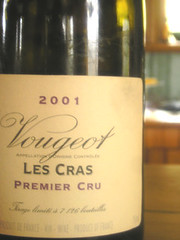 Ode to Nilay *
Ode to Nilay *